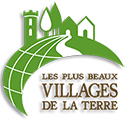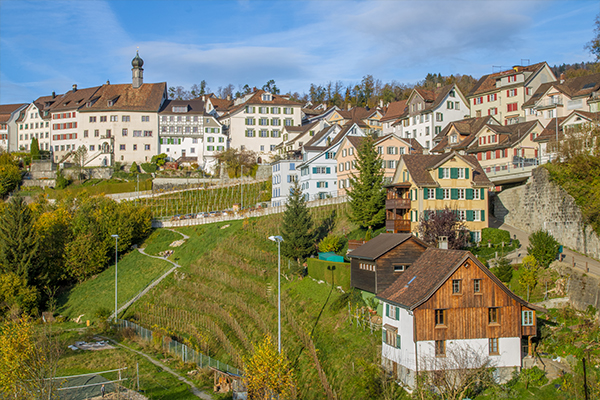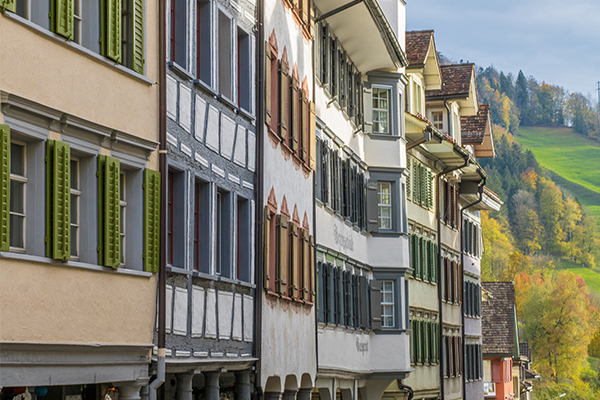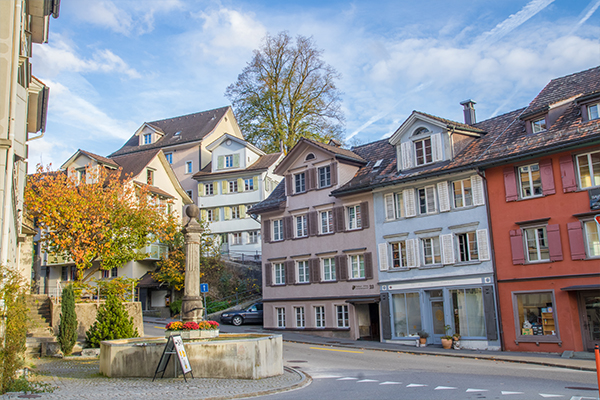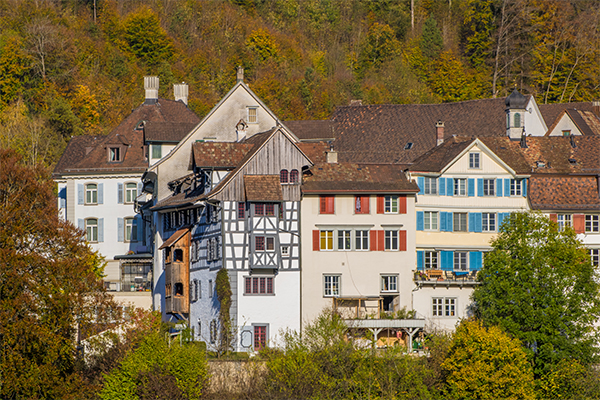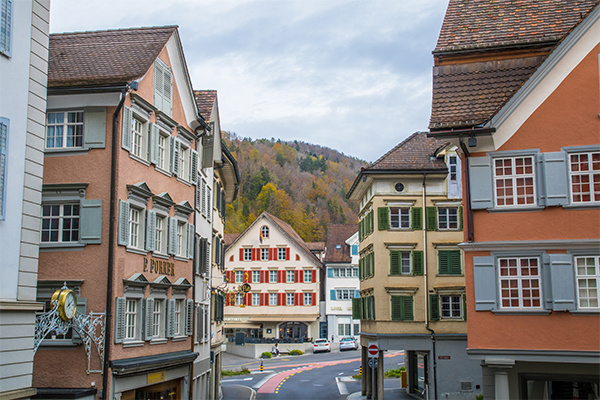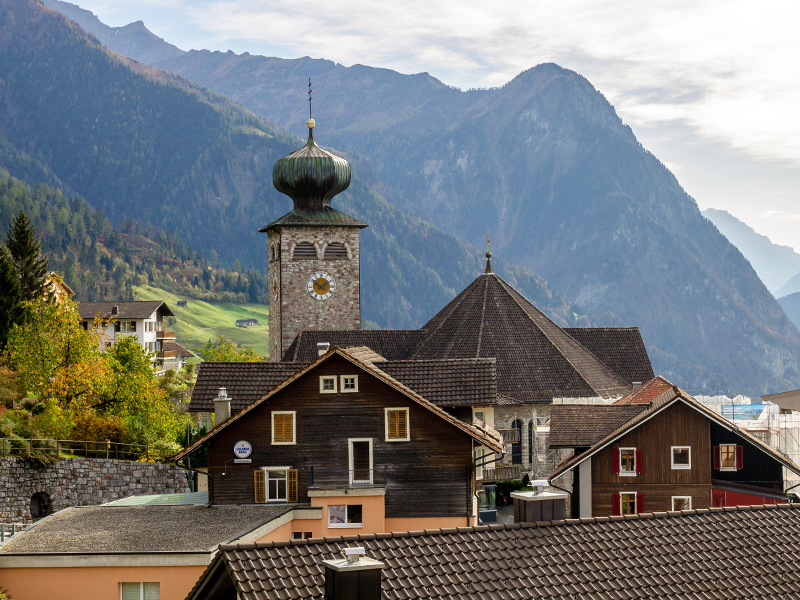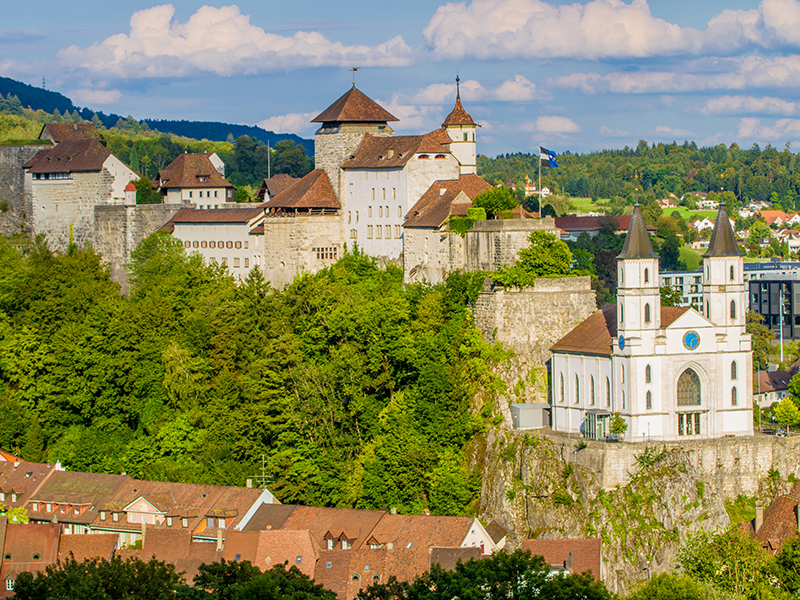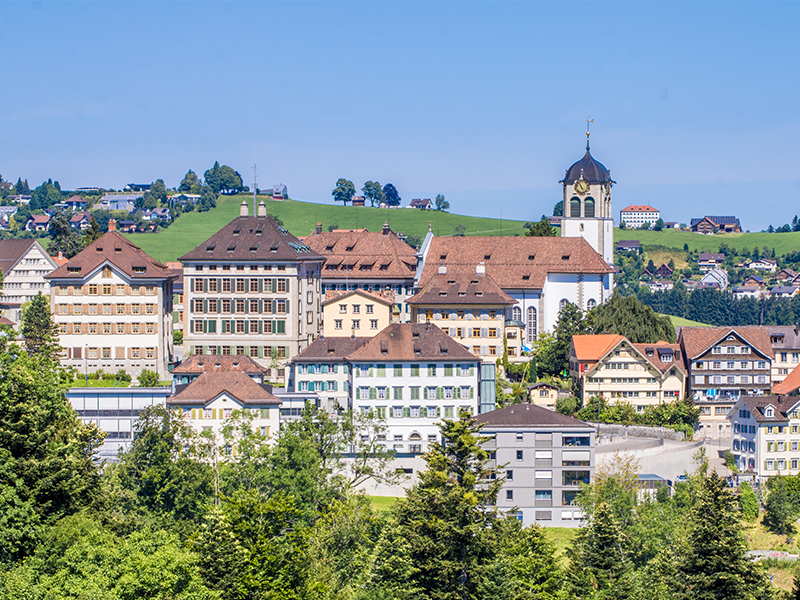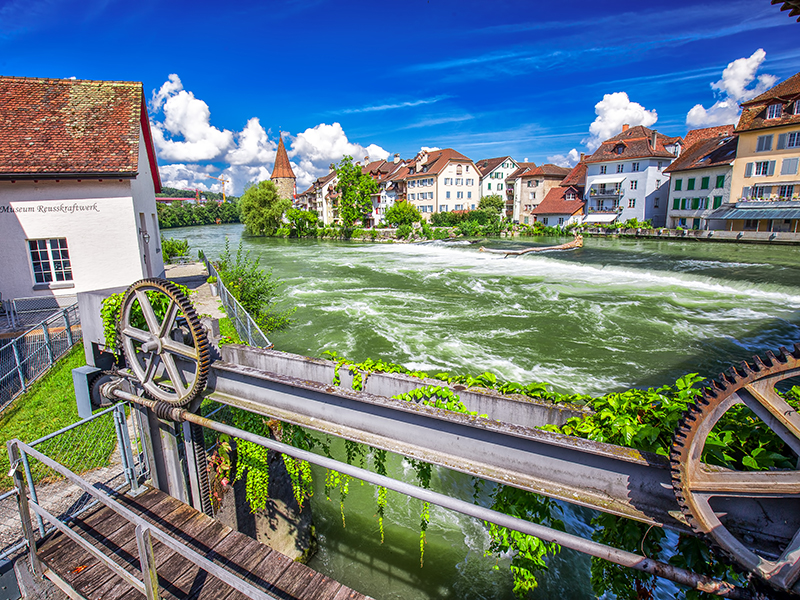Lichtensteig
Founded around 1200 by the Toggenburgers on a rock spur on the Thur. Since 1468 it has belonged to the Abbey of St. Gallen, since 1803 the district capital of Neutoggenburg. The old town has a semicircular shape and was originally protected by a moat and wall.
The old town narrows in a semicircle around the mountain; originally it was defended by moats and boundary walls. The gates were demolished in 1828.
The historic centre of Lichtensteig is unique. Since the 13th century, residential and commercial buildings have grown together into an organic whole that inspires architecture lovers: almost a dozen shops, restaurants and cafes invite you to stroll and browse the alleys. And during events such as jazz days or the Christmas market, the old town does not become a backdrop, but remains a central part of the events. The historic old town of Lichtensteig was honoured in 1975 by the Council of Europe for the exemplary maintenance of the site. The preservation and beautification of the urban landscape is still very important today.
Lichtensteig is located in the Thurtal. But when a river digs its way, not only valleys remain after thousands of years. Because sometimes the water meets tougher opponents, as in the village of Steigrüti. Here, surrounded by fields and forests, lies the Aeolian Gorge. You can stay in the Äulischlucht for a whole day. There are hidden gorges, chimneys, gravel banks, a waterfall, bathing facilities, viewpoints and forests where you can play hide and seek.
The church of St. Gallen is a concrete building, built by Walter M. Fördererer in 1969/70 on the site of a neo-Gothic church. The old Rathaus (Town Hall), mentioned in 1534, underwent renovations in the 17th century. It is the stone building that dominates the S section of the row of houses. The Türmchenhaus and the "Glocke" were originally parts of a patrician house on Hauptgasse, dated 1583. The renovation dates back to 1766. Staircase at the back of the "Glocke". A N of the town, the Loreto Chapel, built in 1677-80; it is a baroque complex with a prothyrum crowned by turrets. Below Grueben, on the left-hand side of the valley, the Mösli house with its longest façade. The portal bears the date 1615. Toggenburger Heimatmuseum (Toggenburg Museum of Local History, house no. 191).
Not to be missed
Features
There are no upcoming events.
| Culture |  |
| Landscape |  |
| Gastronomy |  |
